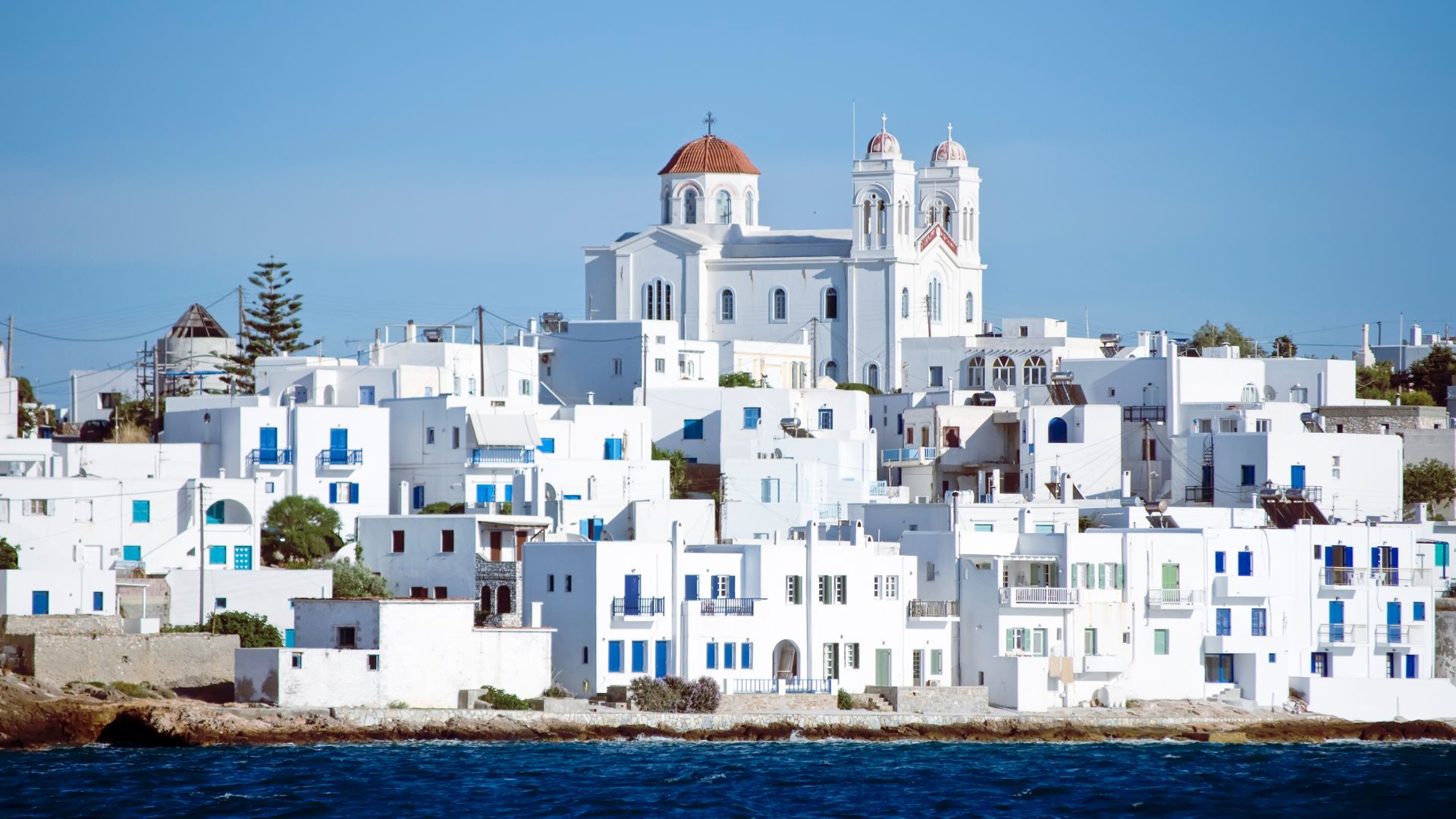When I arrived in Parikia, the capital of Paros, I could feel the pulse of Cycladic life mixed with a special charm you just don’t find anywhere else by the Aegean. Whitewashed buildings pressed close along narrow paths, and the constant hum of the ferry port set a lively, but somehow welcoming, pace I hadn’t felt in other parts of Greece.
As I wandered the promenades, I realized Parikia lets you dive into Paros’ ancient roots and its modern Mediterranean beat at the same time.
One highlight for me? Stepping inside the Panagia Ekatontapiliani, or “Church of 100 Doors.” The stone walls seem to whisper stories from centuries past and offer a peaceful break from the busy streets outside.
The church’s history and quiet interior really stood out. Anyone curious about the island’s spiritual side will want to see it.
Parikia isn’t all about history, though. You also get to soak up the ferry port buzz, enjoy fresh local food, and catch sunsets that stick with you long after you leave. Every stroll along the waterfront felt open to possibility, whether I was hopping on a boat to a hidden cove or just watching daily life play out by the sea.
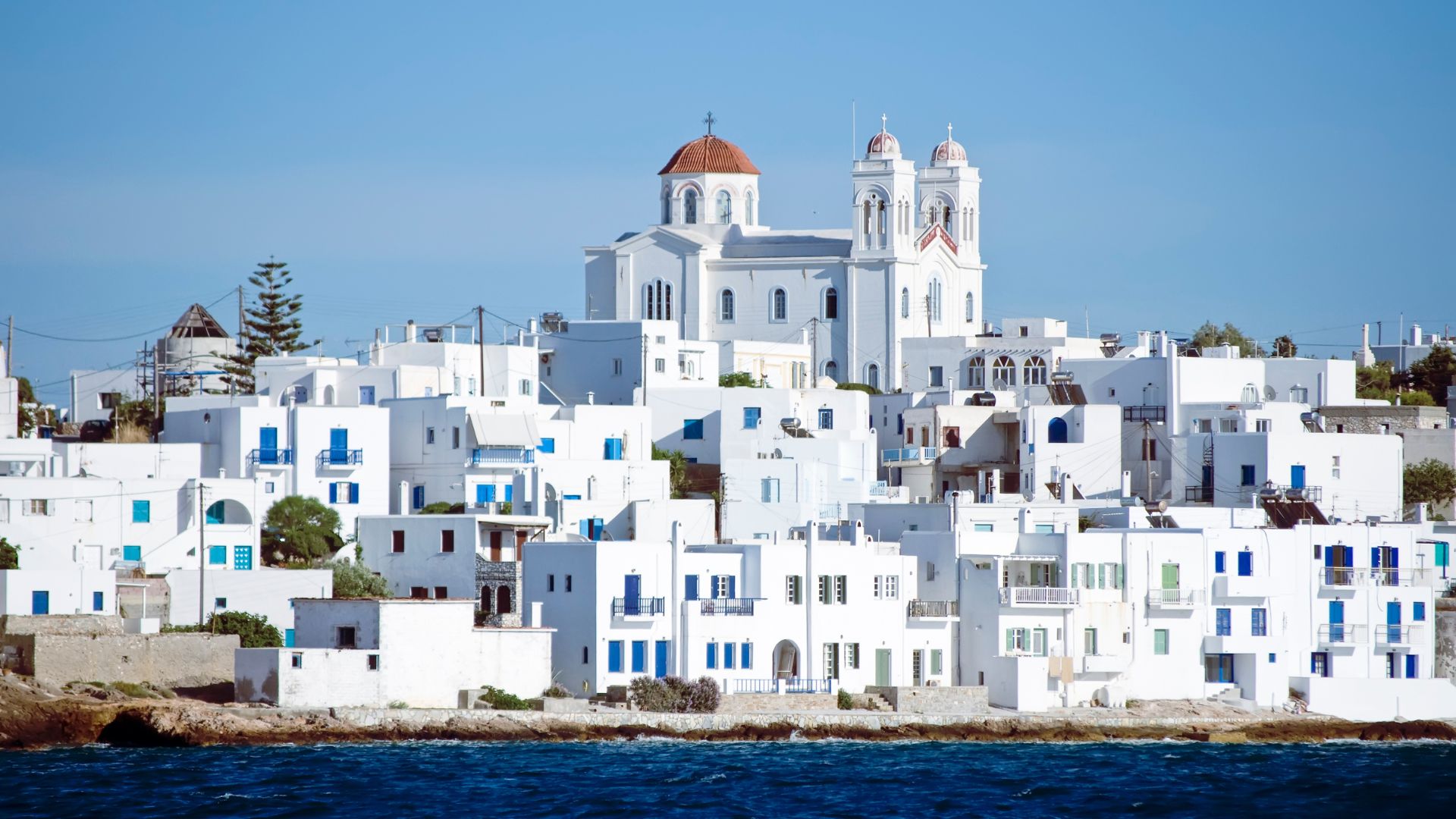
Parikia’s Historic Old Town and Venetian Legacy
Parikia’s Old Town pulled me in with its twisting alleys, ancient walls, and stories etched into every stone. The Venetian castle, tucked-away courtyards, and nearby medieval villages brought centuries of culture to life.
Labyrinth of Cobbled Streets
I wandered through narrow cobbled lanes that twisted and turned like a maze. Sunlight bounced off whitewashed houses, their blue windows bright against the sky.
Every corner surprised me—tiny chapels, old archways, and balconies overflowing with flowers.
Shops and cafes lined the alleys, most with hand-painted signs and colorful doors. The retail spaces were small, usually family-run, with owners who loved sharing local tips.
I found artisan jewelry, pottery, and bakeries tucked away from the busier promenade.
Locals greeted me as I strolled, and honestly, I lost track of time. Getting lost in Parikia’s Old Town felt more like a treat than a problem.
Quiet squares and shaded passages slowed down the pace of life. Here’s what really stood out:
| Feature | Details |
|---|---|
| Alleys | Narrow, cobbled, whitewashed |
| Main Sights | Chapels, courtyards, Cycladic houses |
| Shopping & Food | Local crafts, bakeries, small cafes |
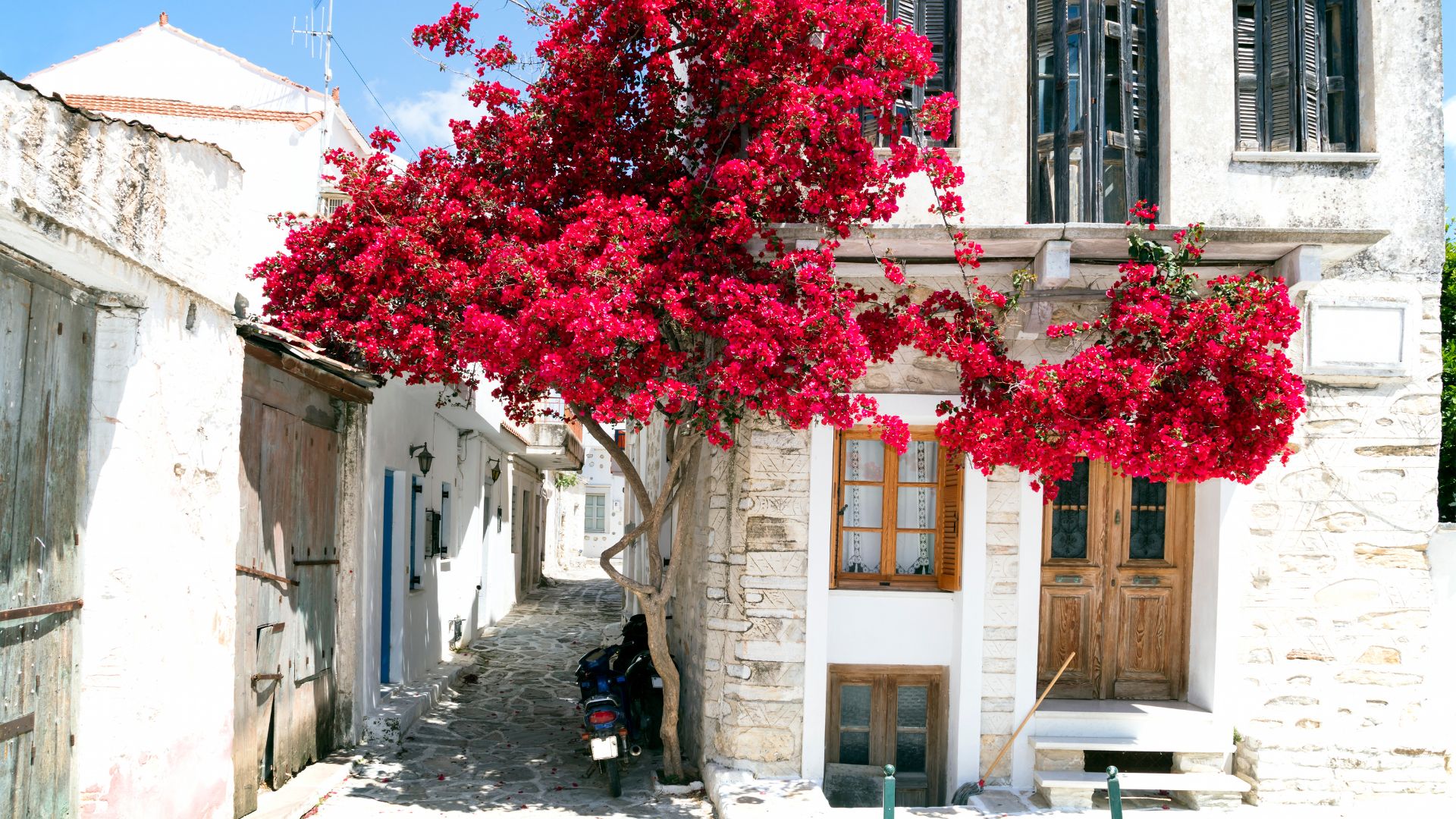
The Castle and Fortified House
Right in the heart of the old town, the Venetian Castle, or “Kastro,” rises up from the 13th century. When I first saw it, the rough stone tower felt solid and enduring.
Builders used marble blocks from ancient Greek temples, so bits of older history are literally part of its walls.
The Kastro isn’t just one building. It’s a cluster of fortified homes, old walls, and archways stepping up the hillside.
From the top, I caught sweeping views of Parikia and the sea beyond.
I’d say go in the morning, before the crowds. Look for marble door frames with mysterious symbols, and don’t skip the tiny Agios Konstantinos church at the summit.
If you love chasing down stories from the past, this spot can’t be missed.

Medieval Villages Nearby
Outside Parikia, medieval villages like Lefkes and Marpissa keep their old-world charm alive. I took a quick drive to Lefkes, where narrow paths and stone houses wind around terraced hills.
Lefkes once protected people from pirate raids. The houses have thick walls and small, arched windows.
Locals still gather in the village square, chatting under plane trees beside old churches.
Marpissa is another gem, with winding streets perfect for slow walks. I noticed traditional windmills and pink bougainvillea spilling over white walls.
Exploring these villages gave me a taste of how people lived in the Cyclades during Venetian times—a place where history shapes every day. If you’re looking for peace beyond Parikia’s port, these villages are a quick and rewarding escape.
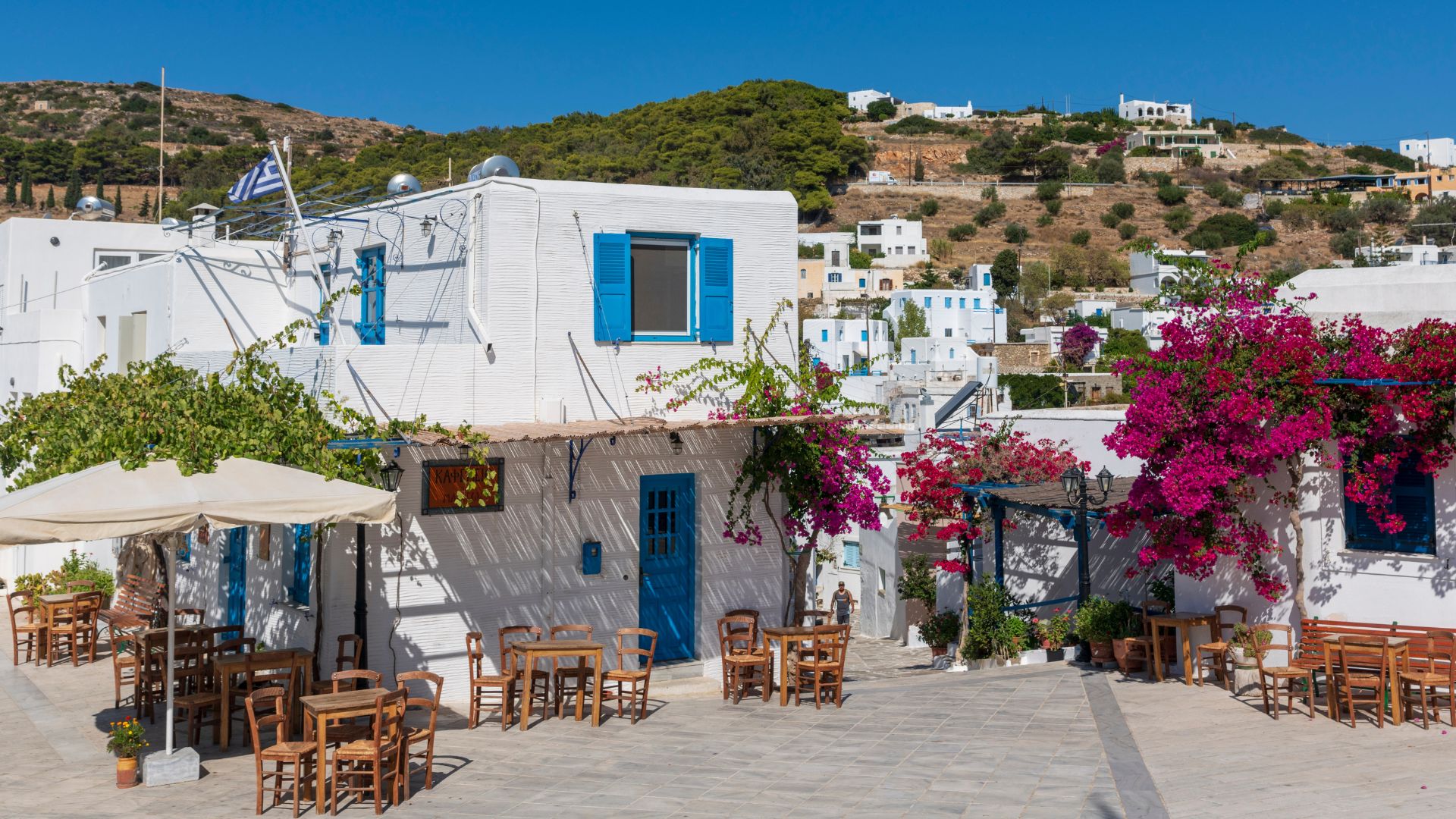
Ancient Churches and Sacred Landmarks
As I wandered Parikia, I stumbled on a mix of centuries-old churches, sacred spots, and mosaics. These places tell Paros’s story through their art, peaceful courtyards, and deep roots.
Church of Panagia Ekatontapiliani
Right by the busy harbor, the Church of Panagia Ekatontapiliani stands quietly but commands attention. Known as the “Church of 100 Doors,” this place is over 1,600 years old.
Some say Saint Helen, mother of Emperor Constantine, founded it.
What caught my eye were the marble columns and the big dome above the courtyards. Inside, the stone walls felt cool and silent, decorated with colorful icons of the Virgin Mary.
The church complex includes a baptistery, several chapels, and a small museum.
I felt history all around as I explored. Locals and travelers often stop to light a candle or admire the detailed mosaics.
If you’re into sacred places, you really shouldn’t miss this one.

Agios Andreas and Agios Panteleimonas
A short walk outside Parikia, I reached the hillside where Agios Andreas stands. It’s a small abbey with wide views of Paros’s rocky fields and blue sea.
The walk up is easy and perfect if you want a break from the main street crowds.
Agios Panteleimonas sits in another part of town and feels peaceful, with a simple white exterior. The silence here felt almost louder than the noise in town.
Inside, you’ll find old icons and classic Cycladic architecture.
Both churches stay quiet and give you a taste of everyday Greek life. If you want to slow down or see a local side of Parikia, these are worth a visit.
Mycenaean and Byzantine Heritage
Parikia’s roots go way back. I found remains from the Mycenaean era near the old cemetery—stone walls, tombs, and carved marble.
Near the ferry port, bits of a ruined temple to Apollo hide in plain sight. Standing there, I realized people have gathered in this spot for thousands of years.
The Byzantine influence shows up in church walls and local art. Archways, worn mosaics, and faded frescoes all tell how Paros connected ancient and medieval Greece.
Every crack and tile has a story—sometimes about bishops, sometimes about villagers’ prayers whispered centuries ago.
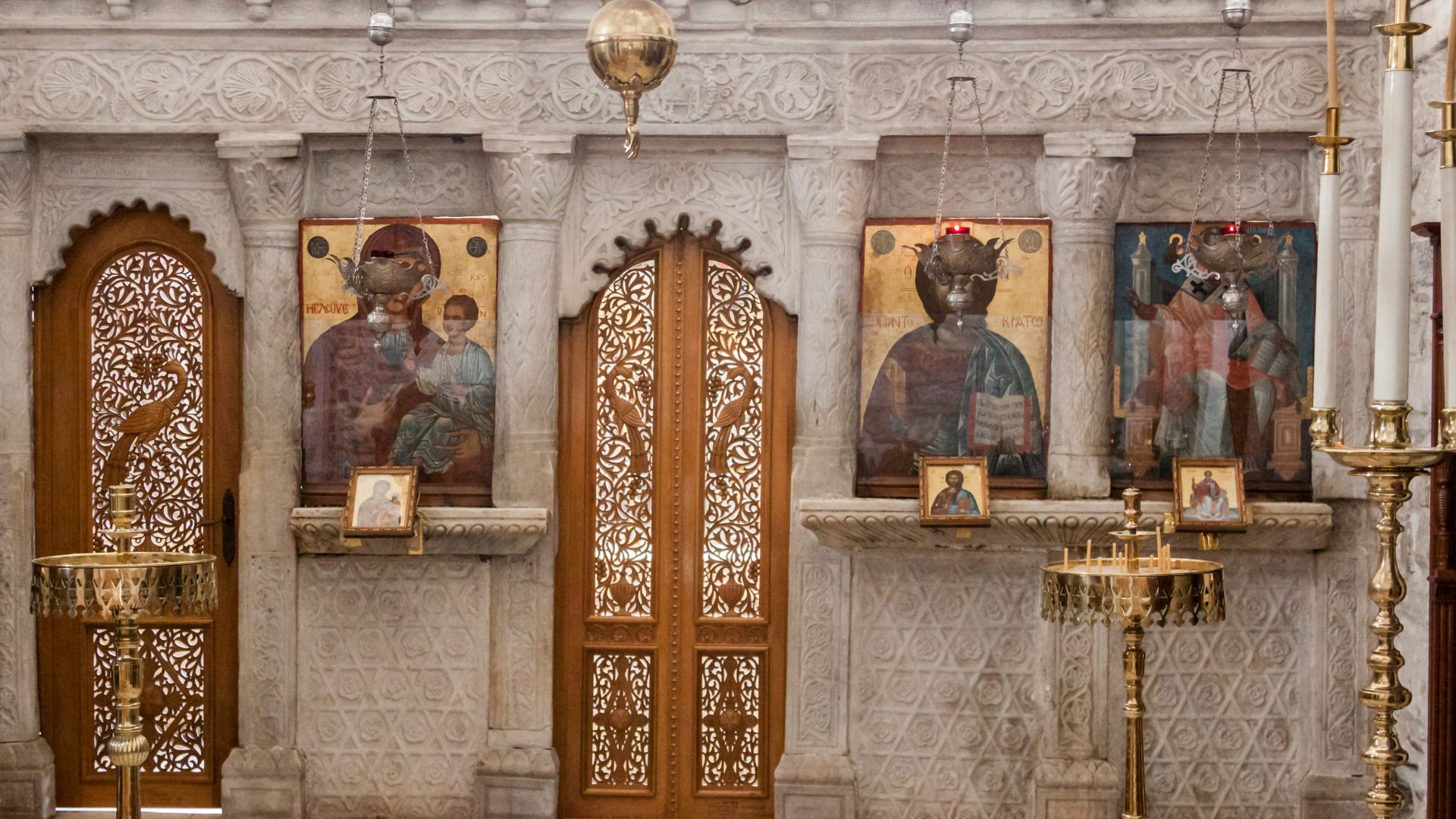
Sacred Mosaics and Art
Inside Panagia Ekatontapiliani and smaller churches, sacred mosaics catch the sunlight. I was especially drawn to the gold-and-blue scenes of saints and the Virgin Mary—some going back centuries.
These mosaics aren’t just decorations. They show off the styles and beliefs of different eras.
Some even use tiny colored glass and stones from Paros itself.
Here’s what I looked for:
- The dome mosaic showing Christ with angels
- Old stone icons with faded faces
- Painted panels showing daily island life
Seeing them up close, I felt a connection to the artists and believers who made these works last so long.
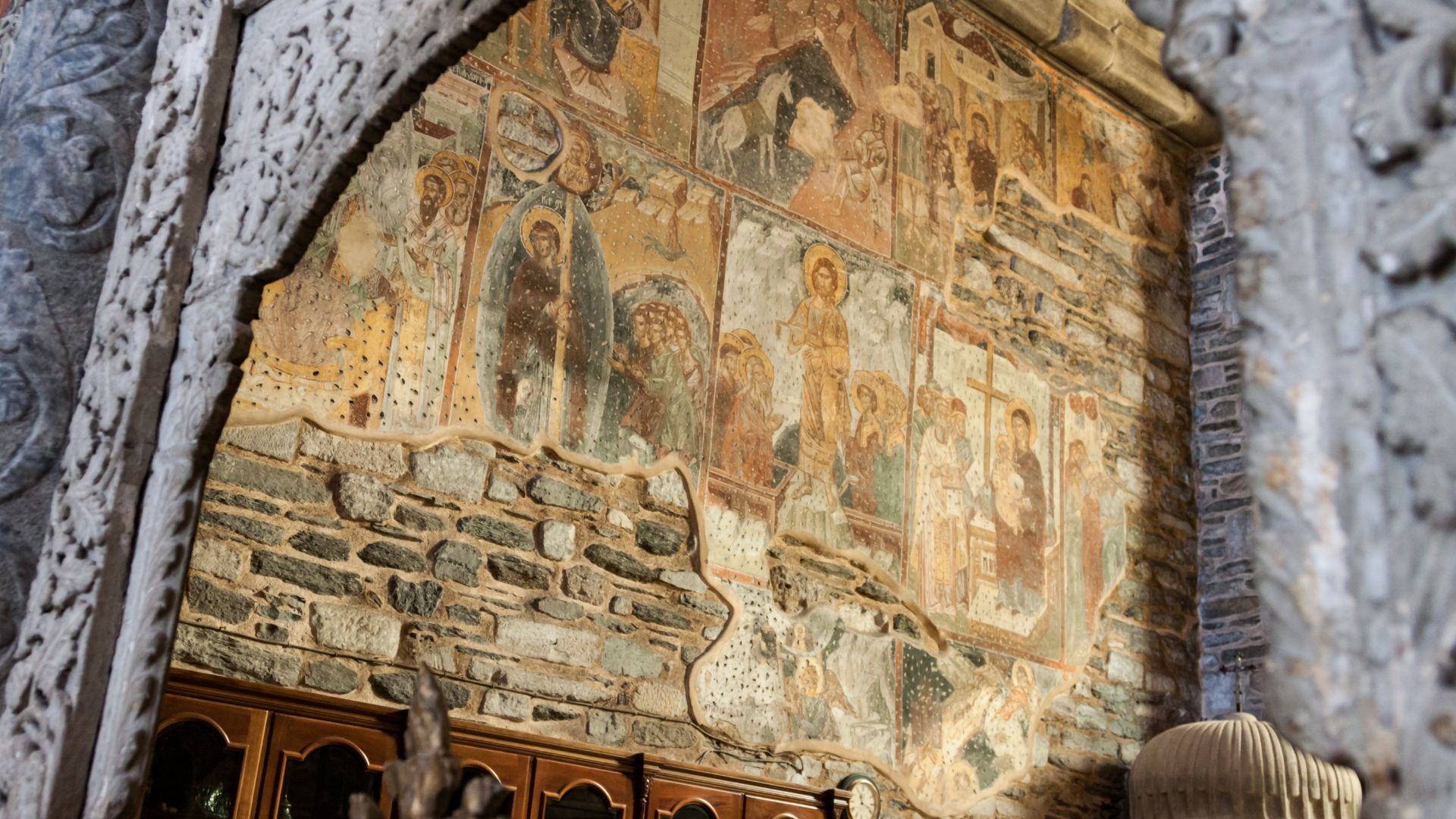
The Bustling Promenade: Life by the Seafront
The seafront promenade in Parikia is where the town’s heart beats the loudest, especially in summer. Here, local culture, daily routines, and Cycladic charm all blend together, set against blue water and whitewashed walls.
Pedestrian Streets and Market Place
I ducked into the maze of pedestrian streets just off the seafront and found myself right in the busy marketplace. Small shops line these stone-paved lanes.
Fresh fruit stands, handmade jewelry, and local art fill the air with color and a friendly buzz.
It feels lively but never rushed. The market is the place for unique gifts or specialties like honey and spices that taste like Paros itself.
Artists sometimes set up right beside shopkeepers, bringing a creative spark to the neighborhood.
In the mornings, bakery scents mix with sea breeze, making every stroll memorable.
At every turn, locals and visitors fill the shops, especially as part of Paros’s touristic promotion efforts. The chatter and bartering feel like a daily tradition in this slice of island life.
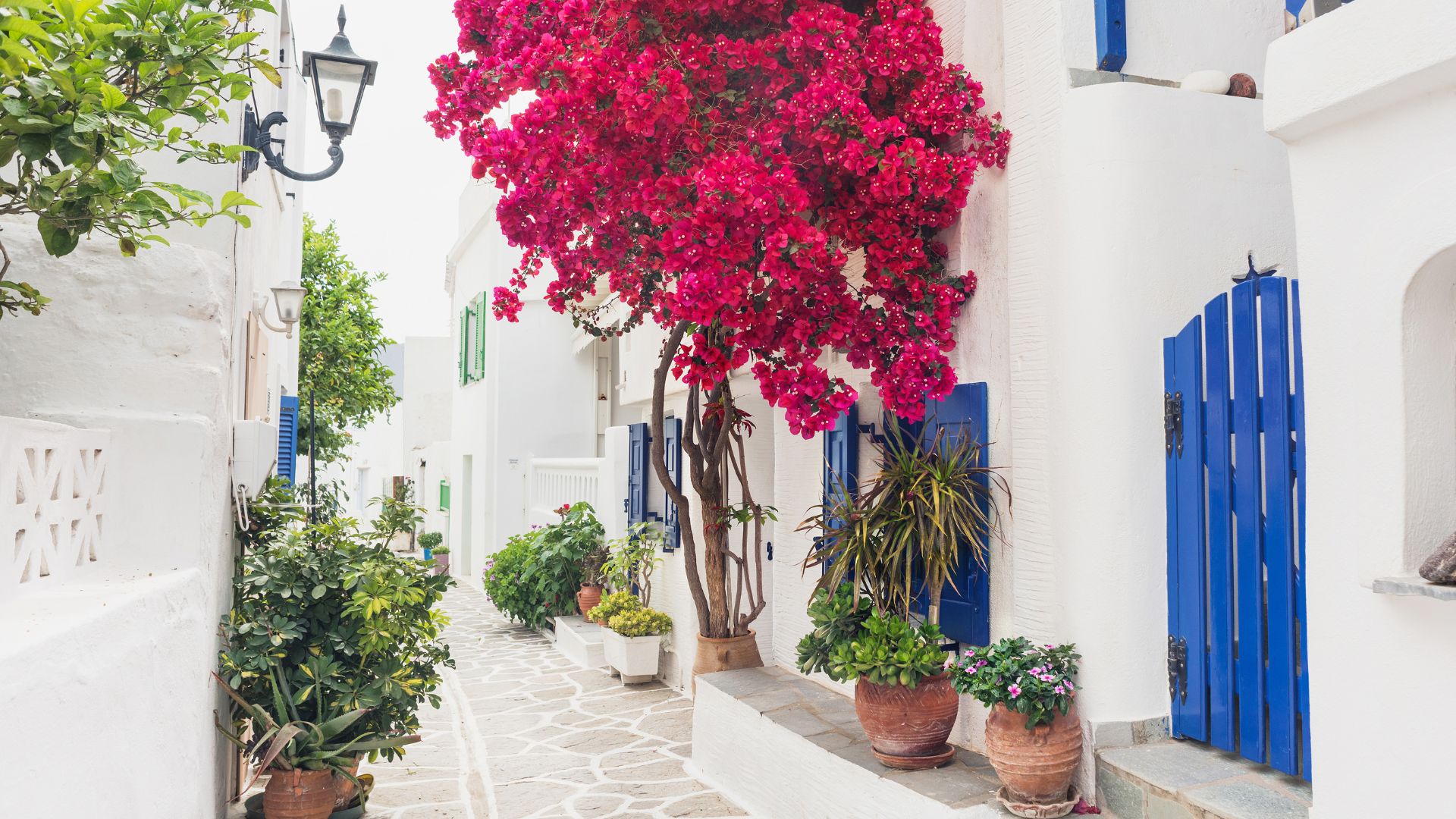
Cafés, Seaside Dining, and Relaxation
The seafront is full of cafés and tavernas, with chairs facing the bay in neat rows. I could sit for hours, sipping iced coffee and sampling fresh seafood as boats drifted by.
The pace slows down, inviting you to just watch, listen, and breathe.
Many places stay open late, glowing with lanterns. Some tavernas have live music or casual art shows.
Grabbing an outdoor table is a must, especially at sunset when the sky turns orange and everyone seems to pause.
Whether it’s a long lunch or just a quick break, the promenade is built for relaxing. Locals and visitors gather to catch up, read, or people-watch as ferries glide by just steps away.
Street View and Magical Light
Walking along the promenade, the street view keeps changing. Old fishermen mend their nets, kids play by benches, and painted boats rock on the waves.
The light in Parikia is something else—midday sun brightens every corner, but it’s the golden hour that really transforms the scene.
Here’s what I noticed most about the magical light:
- Buildings glow with a soft white and pastel tint.
- Palm trees and boats cast long shadows over the stones.
- The sea shifts from deep blue to shimmering pink.
I often stopped to snap photos or just soak it in. In summer, the colors seem even bolder, drawing artists and photographers.
Every step by the promenade feels like walking through a painting, where daily life and art naturally mix.
Parikia Ferry Port Vibe: Island Hopping Epicenter
Arriving in Parikia’s ferry port always brings a buzz of excitement. This spot doesn’t just connect travelers—it sets the rhythm for adventures across the Aegean, with easy links to nearby and distant islands.
Arrival in Paros: First Impressions
When I first stepped off the ferry in Parikia, the energy hit me fast. The sound of rolling suitcases mixed with salty air as crowds spilled onto the promenade.
Vendors and taxi drivers called out, and blue-and-white Cycladic buildings peeked through the crowd.
The waterfront was lined with cafes, bakeries, and shops. Locals moved with purpose, while travelers—like me—paused to take it all in.
Fishing boats bobbed beside sleek ferries, making it obvious this port isn’t just for show; it’s the real heart of island travel.
No matter how many ferries I’ve caught, arriving at Parikia always feels like both a gateway and a celebration. Every arrival here feels like a new invitation.
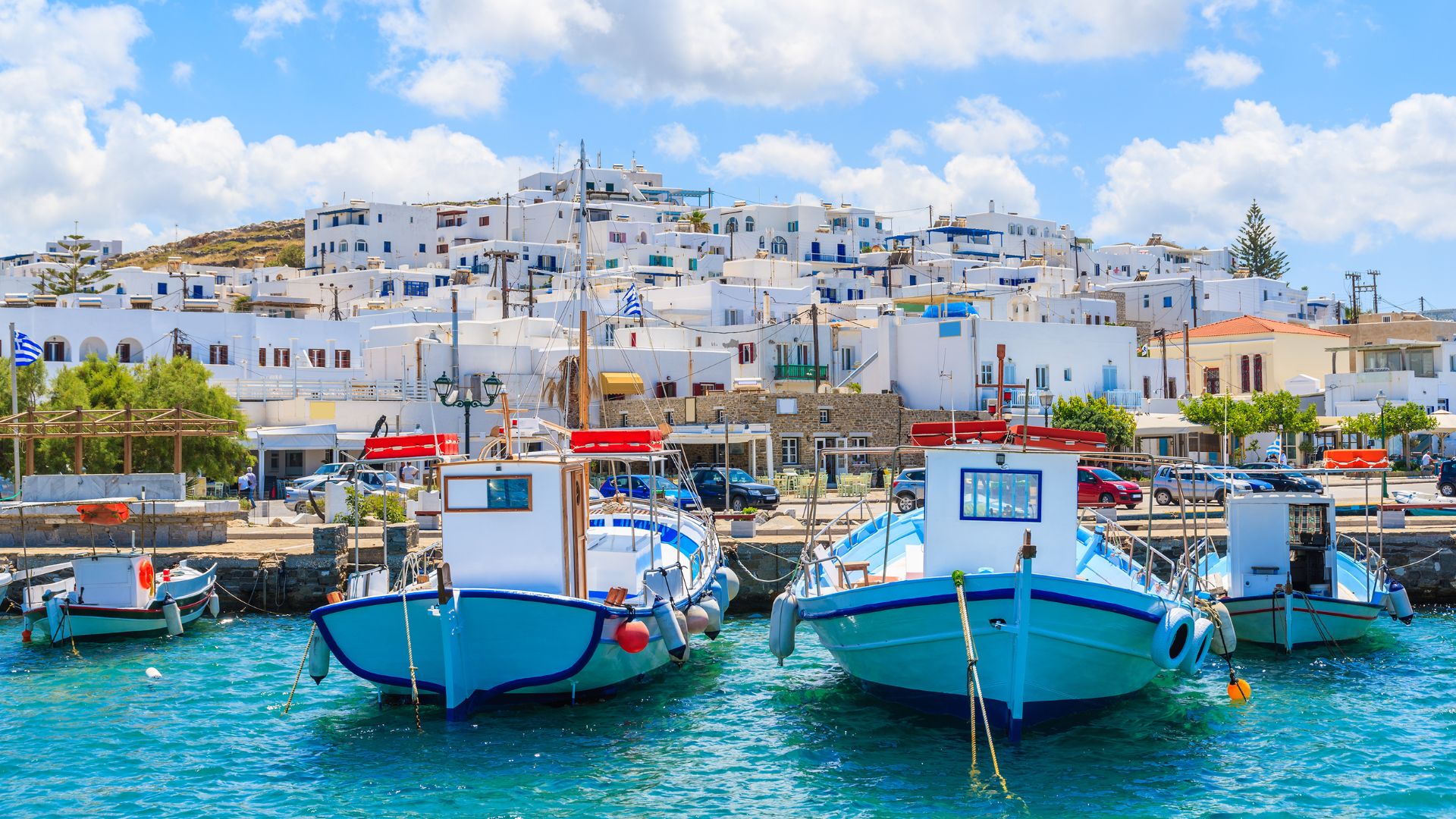
Island Connections: Naxos, Santorini, and Beyond
The Parikia ferry port acts as a launchpad for island hopping in the central Aegean. Ferries leave daily, linking Paros to neighbors like Naxos, Santorini, and Mykonos.
I’ve caught early boats to Naxos and felt that thrill as a new island appeared on the horizon.
Ferry lines here also connect to quieter gems like Ios, Milos, Syros, Amorgos, and even Crete. I checked the schedule and was honestly surprised by how many options pop up, especially in summer.
If you want to visit a major hotspot or find somewhere off the radar, there’s usually a ferry heading out soon.
Trips between islands can be quick—sometimes under an hour for places like Naxos or Mykonos. That makes day trips or short stays totally doable, so I could see more without losing time.
Travel Tips for Ferry Riders
If you want to make the most of the Parikia ferry port, you really need to plan ahead. I learned that booking ferries early during high season (June to September) saves you from the headache of sold-out rides.
You can grab tickets online, at ticket booths by the waterfront, or inside travel agencies.
Here are some practical tips I picked up:
- Arrive 30–45 minutes before departure
- Keep your ticket (paper or digital) handy for boarding
- If you get seasick, sit on the lower deck and bring motion sickness bands
- You’ll find plenty of luggage storage at the front of each ferry
- Watch the announcement boards—ferries sometimes run late or show up early
Cafes by the port make waiting a lot more pleasant if you have time to kill. For spontaneous trips, last-minute tickets do pop up, but honestly, I wouldn’t rely on luck in July or August.
The atmosphere at Parikia’s port buzzes with energy, so waiting almost feels like part of the adventure.
Exploring Beaches, Nature, and Active Experiences
Parikia isn’t just about ancient sites and its busy harbor. I found the coastline, hiking trails, and opportunities to get active just as memorable as the cultural attractions.
Best Beaches Around Parikia
I spent a few afternoons checking out beaches near Parikia. Livadia Beach is the easiest to reach—just a short walk north of town.
The sand feels soft, the water stays shallow, and beach cafes stretch along the shore. It’s a great spot for lounging or grabbing a snack.
When I wanted somewhere quieter, Marcello Beach became my go-to. You can get there by boat or take a scenic walk across the bay.
The water is calm and clear, and it’s rarely crowded. Families and groups seem to love its relaxed vibe.
If you’re after something wilder, Krios Beach sits farther along the same bay. The place feels rugged and is perfect for swimming or snorkeling.
Lifeguards watch over the beach in summer, which definitely helps if you’re traveling with kids.
Here’s a quick look at key beaches near Parikia:
| Beach | Distance from Parikia | Vibe | Good for |
|---|---|---|---|
| Livadia | 10 min walk | Lively, social | Sunbathing, families |
| Marcello | 30 min walk/by boat | Laid-back | Swimming, relaxing |
| Krios | 35 min walk/by boat | Natural, quiet | Snorkeling, couples |
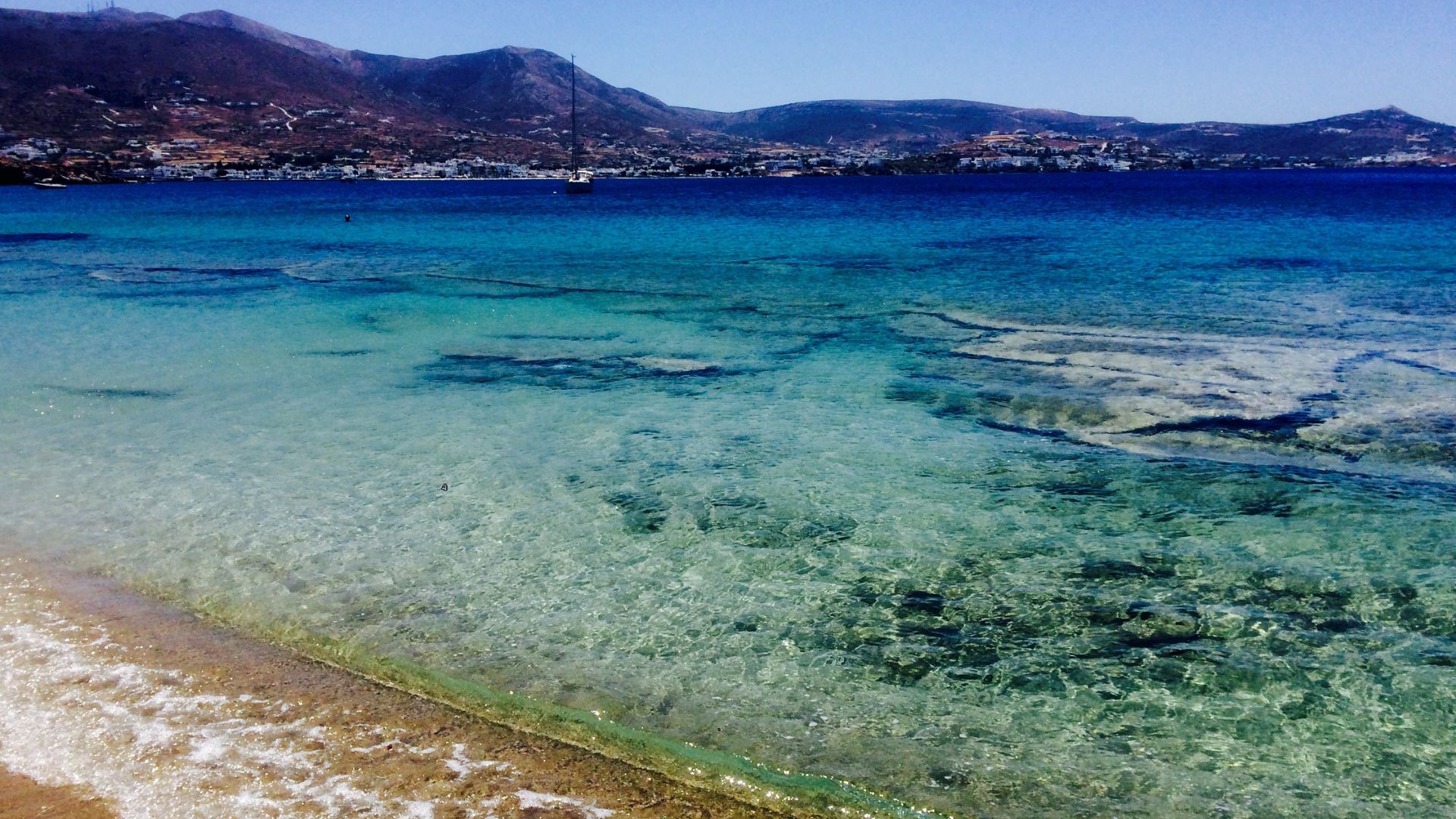
Hiking, Footpaths, and For Nature Lovers
I love lacing up my sneakers and wandering the footpaths behind Parikia’s port. The countryside rolls out gently—hills, olive groves, and wildflowers everywhere in spring.
One of my favorite walks leads from Parikia toward the tiny village of Agios Arsenios. The path feels easy and peaceful, with open views down to that endless blue water.
If you want a challenge, try part of the Byzantine Road. This centuries-old stone path connects Parikia with Lefkes village.
A fresh breeze and a steady climb kept me moving, and the sense of history is everywhere. Along the way, I met locals tending gardens and spotted butterflies hovering over thyme bushes.
Nature lovers will find plenty of short and long hikes. Most trails are well-marked, but I always carry water and a hat since shade disappears fast at midday.
Family Fun and Activities for Sports Enthusiasts
If you’re in Parikia with family or just itching for adventure, you’ll find no shortage of energy. Many beaches near town offer kayak and stand-up paddleboard rentals.
I joined a guided kayak tour and paddled along the coast, spotting fish in the clear water. For kids, several organized beach games and mini-soccer courts keep things lively.
My younger relatives had a blast playing in the soft sand and trying out pedal boats at Livadia Beach.
Sports fans can sign up for windsurfing lessons or book a beginner’s sailing class right from the marina. The bay’s wind conditions are steady—good for learning, but rarely too wild.
There’s also a local diving center with intro dives and snorkeling trips for anyone curious about what’s underwater.
With so many ways to stay active, you can easily balance lazy hours at a café with bursts of movement in the sun.
Cultural Encounters and Village Experiences
When I wandered through Parikia and nearby villages, every corner felt unique—layered with history, style, and a bit of creativity. Exploring these villages let me see daily life, from the hilltop lanes down to the busy centers.
Village Heights: Up the Hills from Parikia
Leaving Parikia, I decided to climb into the hills. The view of the Aegean Sea from up here is a knockout, especially near villages like Kostos.
I noticed homes clinging to steep lanes, painted bright white and surrounded by bursts of flowers.
Locals greeted me with friendly nods as I wandered. Lemon trees lined small courtyards, and sometimes I’d stumble across a tiny chapel or a shaded bench.
Mornings work best for these walks—the air is cool and the streets are still quiet.
The peacefulness made it easy to imagine life centuries ago, with only distant church bells for company.
Traditional Style and Renovated Dwellings
Walking through village streets, I admired the classic Cycladic architecture—flat roofs, curved doorways, and blue shutters everywhere. Many homes kept their original stone details, showing how Paros values its traditions.
But I was surprised by how many renovated dwellings I saw, where historic exteriors hide modern, comfy interiors.
I loved peeking through gates and seeing stone patios with old olive presses turned into garden ornaments. Some families live in these updated homes, while others rent them out to visitors looking for an authentic stay.
This mix of old and new keeps the village lively. I found the atmosphere inspiring, perfect for slowing down and enjoying simple pleasures—like sipping local coffee under a grapevine canopy.

Art and Culture in the Village Square
Every village has its own central square. That’s where life and culture really come alive.
In Parikia’s lively plateia, and in smaller spots like Kostos, I found open-air cafés and art studios tucked between everyday shops. Sometimes, pop-up markets showed off local crafts, and I couldn’t help but wander through them, curious about what I’d find.
The squares turn into gathering places, especially in the evenings. Families and friends crowd around tables, lanterns swinging overhead.
Local artists set up paintings and pottery right outside their workshops. One afternoon, I joined a group sketching the church facade—turns out, it’s harder than it looks.
Music drifts through the air. Sometimes it’s live bouzouki, other times it’s a quiet, traditional song coming from someone’s window nearby.
If you want to connect with Paros’s creative side, these village squares are honestly the best place to start. There’s something about the mix of community, art, and daily rhythms that just feels right.

